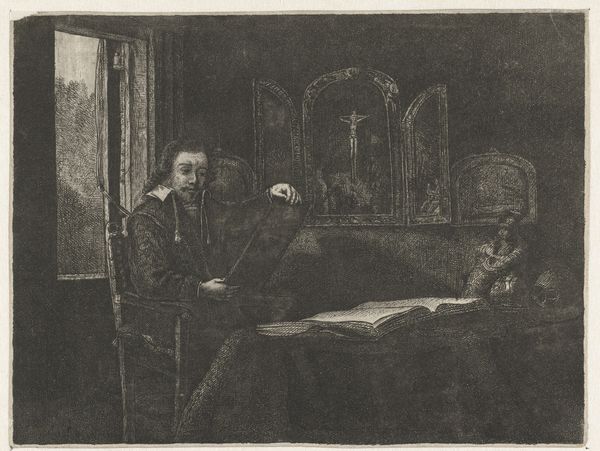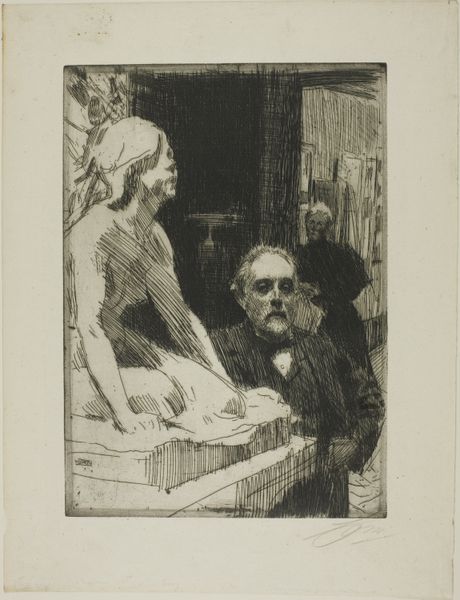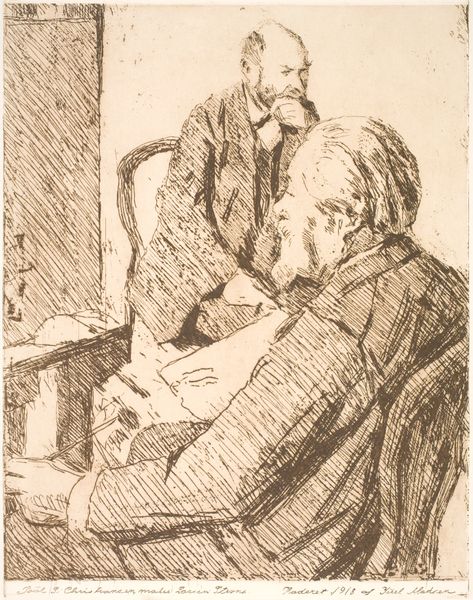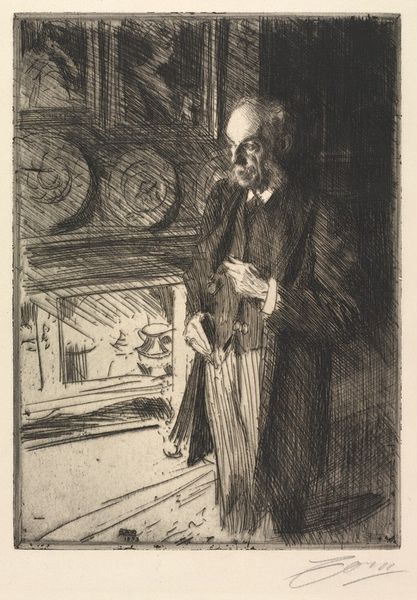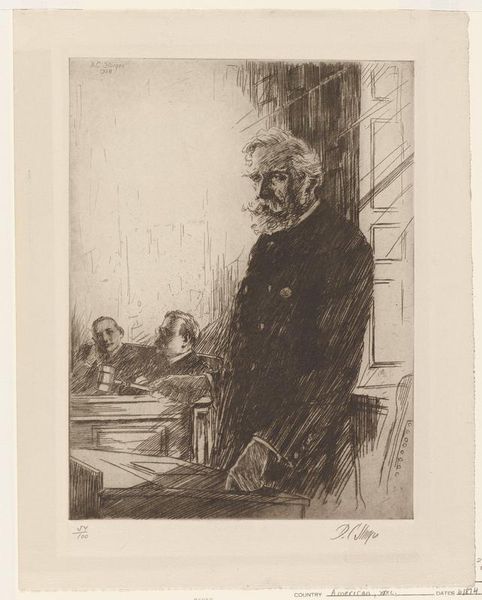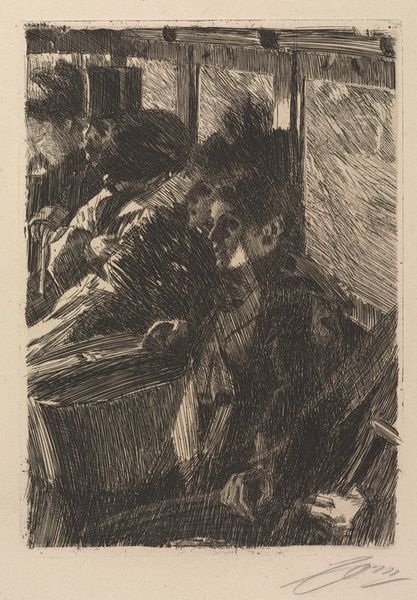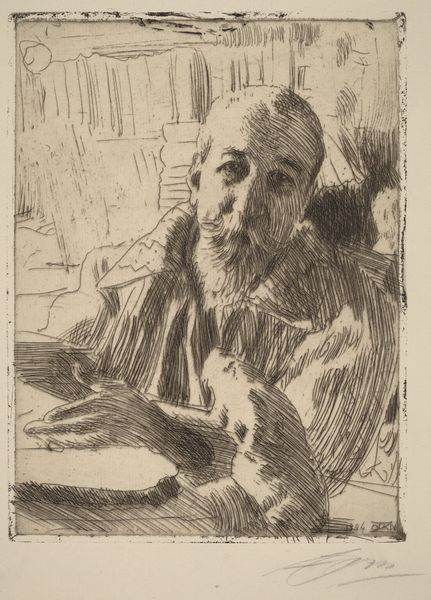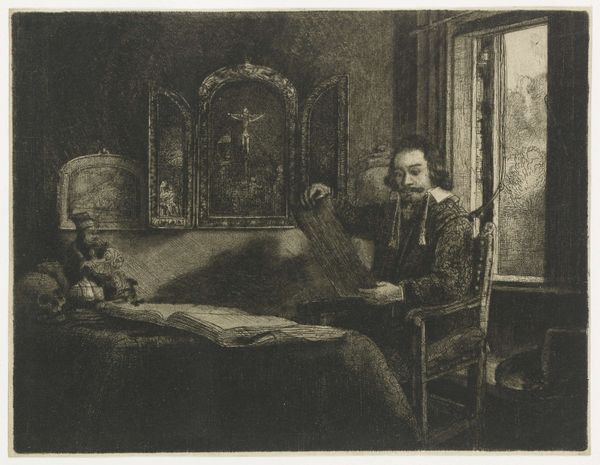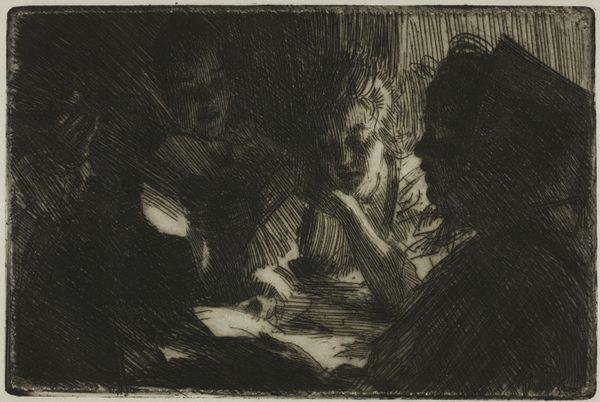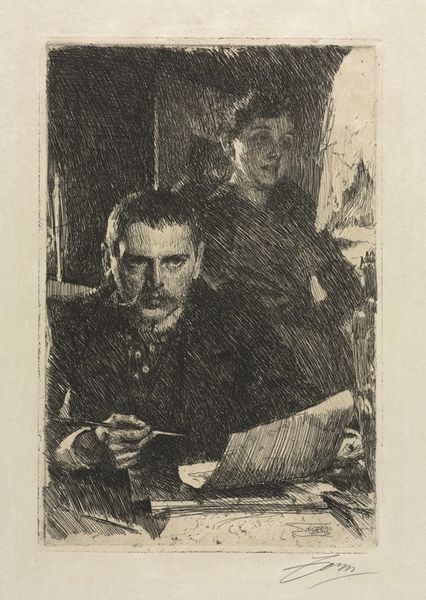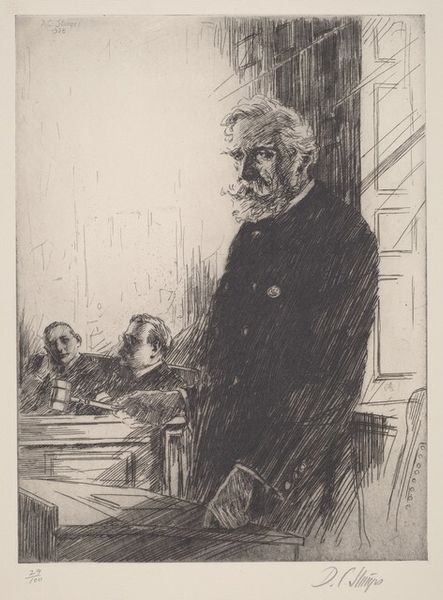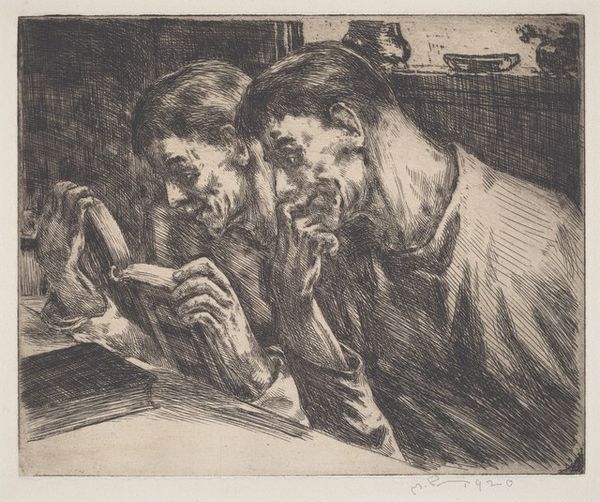
Copyright: Public Domain: Artvee
Editor: Anders Zorn's etching, "Mr. and Mrs. Fürstenberg," from 1895, is incredibly striking. It almost looks unfinished. The textures are rough, and the composition is very intimate, almost intrusive. What strikes you most about this piece? Curator: I think what’s immediately noticeable is the artist’s conscious decision to represent a modern bourgeois couple. Zorn isn't simply capturing their likeness. How do you see social power reflected in the etching technique? Editor: I guess the visible process of creation – the raw lines – disrupts any sense of idealized representation. It’s not meant to present an untouchable image, and feels real in a specific context. Curator: Exactly. Consider the burgeoning middle class and the rise of consumer culture at the end of the 19th century. Portraiture had long been a tool for the aristocracy and upper class to project power. Etchings democratized portraiture, in a way. Editor: It’s accessible! I hadn't considered it in relation to the social dynamics of art production. Do you see any visual cues related to that context in the piece? Curator: Think about the way they are staged, behind what seems to be an open book, perhaps. It signals to the education and refinement which bourgeoisies of that time would signal, particularly. Editor: So, it’s about actively projecting an identity related to that aspiration and achievement of their milieu. This connects back to the art world as another avenue for displaying status. I'll have to think about portraiture more in those terms from now on! Curator: Exactly! Every stroke tells a story about artistic production, reception, and social commentary.
Comments
No comments
Be the first to comment and join the conversation on the ultimate creative platform.
